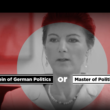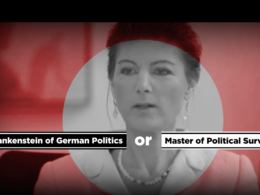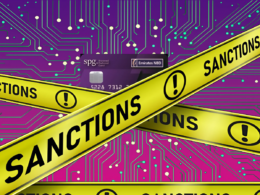On May 10, Russia launched a new offensive near Kharkiv. As the situation in Ukraine remained on the brink of critical, Russia is now weighing a second possible cross-border attack, this time in the Sumy region, a neighboring area.
Andriy Demchenko, a spokesperson for the Ukrainian State Border Service, recently told Radio Liberty, “We cannot exclude it, and I emphasize that this includes the Sumy front.”
Too many politicians and pundits in the US and Europe echo Putin’s talking points, warning that any external intervention in Ukraine will lead to World War III. In fact, sending European troops would be a normal response to a conflict of this scale.
Russia’s invasion has upset the regional balance of power, and Europe has a vital interest in seeing this imbalance redressed. The obvious way to do this is to provide a lifeline to the Ukrainian Armed Forces.
What steps can the West take to stop this?
Lift the taboo on sending troops and provide a lifeline to Ukraine.
Leading European figures expressed their support for the proposal—or at least for an open debate about it—said Benjamin Haddad, member of parliament for Macron’s Renaissance party. Among them are Czech President Petr Pavel, Estonian Prime Minister Kaja Kallas, Polish Foreign Minister Radosław Sikorski and Lithuanian Foreign Minister Gabrielius Landsbergis.
European troops could conduct both non-combat and combat operations to reduce pressure on Ukraine. A purely non-combat mission would be the easiest to implement. A European force could relieve the Ukrainians of logistical functions, such as the maintenance and repair of combat vehicles.
By being west of the Dnipro River, the natural barrier that protects most of Ukraine from the Russian advance, European troops would demonstrate that they are not there to kill Russian soldiers, preempting the inevitable accusations of Europe as an aggressor.
Some Ukrainian equipment is already being sent to Germany, Poland, and Romania for major repairs, but carrying out these repairs closer to the front would speed up the process, reduce the time the equipment is out of action, and free up more Ukrainian forces to accomplish combat missions.
French, Polish, and other European military advisors could also provide lethal and non-lethal training in Ukraine to improve the Ukrainian soldiers’ skills. If additional mobilization expands the Ukrainian army next year, as seems likely, increased training capabilities in Ukraine would be especially useful.
Strengthening Ukrainian air defense capabilities
Of course, European forces could do more than repair and train. One such mission might involve reinforcing Ukraine’s air defense capabilities in the region by deploying personnel, providing equipment, or even taking over command and control of the Ukrainian air defense system.
The risks of escalation would be minimal, as European forces would have little chance of killing Russian military pilots launching attacks on Ukraine from Russian airspace. However, they would help shoot down cruise missiles and drones. Thus, European-led AD units would free up more Ukrainian troops to protect forces near the front line, thwart Russian attempts to destroy critical infrastructure, and intimidate the Ukrainian civilians into capitulation.
Demining and clearing of Russian munitions
European troops could also carry out other defense and humanitarian tasks, such as demining and clearing unexploded Russian munitions. Taking over such work from Ukrainian personnel would help protect civilians and support Ukraine’s economic recovery, as farmers now struggle to plant and harvest in fields full of mines and other unexploded ordnance.
Patrolling Ukraine’s border areas
The other combat role, which, like the AD mission, is unlikely to involve Russian troops, would be to patrol areas of the Ukrainian border where Russian troops are not deployed, such as the Black Sea coast and the borders with Belarus and Transnistria, a separatist region of Moldova occupied by Russian troops. Protecting these flanks would free up more than 20,000 Ukrainian troops (with the weapons and ammunition they have) to fight on the frontlines.
“Right now, a lot of Ukrainian troops are stationed at the border with Belarus to prevent a potential invasion from the north,” said Benjamin Haddad, a member of parliament for Macron’s Renaissance party. We could deploy Western forces as a ‘tripwire’ along the border, utilizing troops from the Baltic states or Poland, to free some Ukrainian troops for deployment to the front.
It would also reduce the likelihood of a new front opening up along these borders, as Russia would almost certainly try to avoid expanding the war by attacking other European countries.
European troops could also help secure Ukraine’s three remaining Black Sea ports, which are vital to both the Ukrainian economy and global food security, by freeing up additional Ukrainian soldiers.
Morale and motivation
Any European operation in Ukraine would also have an emotional impact. The presence of European troops would boost the Ukrainian people’s morale and reassure them that Ukraine’s future lies in Europe.
Risks and opportunities
Moscow will try to portray any lethal response to a Russian attack as European aggression, but Russia will be the only one responsible for any escalation.
There is an exaggerated risk that deploying European soldiers to Ukraine in any capacity would escalate the conflict. Russia has very little room to increase the scale of its conventional attacks, with the exception of the use of biological or chemical weapons. Russia has already lost more than 90 percent of its pre-war army, caused the deaths of hundreds of thousands of people, destroyed tens of thousands of combat vehicles, and used the vast majority of its most advanced weapons systems in attacks on Ukraine.
Sanctions have made Russian weapons production more difficult and expensive, and the deployment of troops in Ukraine has left Russia with barely enough forces to secure the rest of its long border, let alone conduct significant operations against other European states.
In January 2022, the Russian army was considered second only to the US army; today, it may not even be the most powerful army in Ukraine. But if European leaders allow Russia to win in Ukraine, Putin will benefit from the fact that nuclear threats will allow him to conquer more countries without provoking a European military response.
The real question is whether Russia will use nuclear weapons if European troops enter Ukraine. This may already be a moot point, given that Western special operations forces are currently operating in Ukraine. Moscow regularly resorts to aggressive rhetoric against NATO members, but so far it has been all bark and no bite, avoiding contact with NATO forces and focusing on neighboring non-NATO countries such as Georgia and Ukraine, which it can safely strike.
As early as 2014, Putin threatened to attack Poland, Romania, and the Baltic states. Over the next few years, he also threatened to invade Finland and Sweden for joining NATO, Norway for hosting additional US troops, Poland and Romania for hosting missile defense facilities, and “any European country” that permitted the deployment of US missiles on its territory.
Over the past decade and a half, the Kremlin has threatened or conducted war games simulating the use of nuclear weapons against Denmark, Poland, Sweden, Ukraine, the United Kingdom, the Baltic States, the European Union as a whole, and, of course, NATO and the United States. At some point, European leaders must ignore Putin’s saber-rattling, which is nothing but propaganda based on the baseless claim that NATO wants to attack or invade Russia.
After all, Russia cannot afford to fight several European countries at the same time, let alone start a nuclear war. Countries bordering Russia, such as Poland and the Baltic states, which are the most likely targets of a nuclear attack, are the least concerned about this prospect, yet they rightly fear aggression from a restored conventional Russian military, emboldened by its success in Ukraine.
Europe is much richer, more technologically advanced, and has a much larger population than Russia. Moscow knows that it cannot win by provoking the entire continent, and it wants to avoid the US military intervention that would most likely occur if Russian troops invaded a NATO country and invoked Article 5 of the Alliance’s charter.
In other words, the West still supports Kyiv’s rhetoric regarding the liberation of all territories captured by Russia, but in practice, Ukraine’s partners lack a vision of how to achieve this. The European Union needs to “turn the tables” on Russian dictator Vladimir Putin after more than two years of full-scale war.








